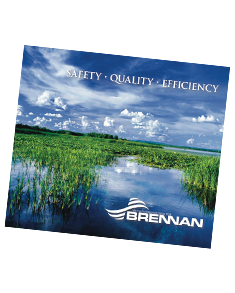Multi-beam surveys, also known as multibeam echosounder surveys, are conducted to map and measure the seafloor or riverbed bathymetry with high resolution and accuracy. This type of survey uses multiple sonar beams to provide detailed information about the shape, depth, and characteristics of underwater surfaces.
Sonar Technology: Multi-beam surveys utilize sonar technology to measure the depth and shape of the seafloor or riverbed. The system consists of a transducer that emits multiple sonar beams at different angles towards the seafloor. These beams reflect back from the seafloor and are received by the transducer, providing information about the distance and intensity of the reflected signals. By measuring the time it takes for the sound waves to travel to and from the seafloor, the depth of the water and the shape of the seafloor can be determined.
High Resolution and Coverage: Multi-beam surveys offer high resolution and coverage compared to traditional single-beam surveys. The multiple beams provide a wide swath of coverage, allowing for more efficient and detailed mapping of the seafloor. The high-density data collected by multi-beam surveys enable the creation of accurate bathymetric models and the identification of small-scale features, such as channels, ridges, wrecks, and underwater habitats.
Data Processing and Analysis: The data collected during multi-beam surveys require extensive processing and analysis. Specialized software is used to process the raw sonar data, correct for system biases, and convert the information into a bathymetric grid or point cloud. Further analysis may involve identifying features of interest, classifying the seafloor substrate, and creating 3D models of the underwater terrain.
Positioning and Navigation: Accurate positioning and navigation systems are essential for conducting multi-beam surveys. Global Navigation Satellite Systems (GNSS) or Differential Global Positioning Systems (DGPS) are used to precisely locate the survey vessel's position and track its movement. In addition, inertial navigation systems are often employed to enhance the accuracy of the survey data by compensating for vessel motion and ensuring precise positioning of the sonar beams.
Data Visualization and Deliverables: The results of multi-beam surveys are typically presented in the form of bathymetric maps, contour charts, or 3D models. These visualizations provide a clear representation of the seafloor topography, allowing stakeholders to interpret the data and make informed decisions. The final deliverables may also include reports, datasets, and digital files that can be used for further analysis, planning, or integration into Geographic Information Systems (GIS).
Multi-beam surveys are valuable tools for understanding underwater topography and ensuring safe navigation in water bodies. By providing accurate and detailed bathymetric data, these surveys support a wide range of marine-related activities, from coastal engineering projects to resource exploration and environmental monitoring.
Download our Corporate Brochure
At CSU Diving, we believe we truly have a special culture in which the safety and well-being of our people is our primary focus. Developed and refined over the course of nearly 100 years, it is what makes CSU Diving a great place to work. For more information on CSU Diving Company and CSU Diving Marine, download our Corporate Brochure here!

